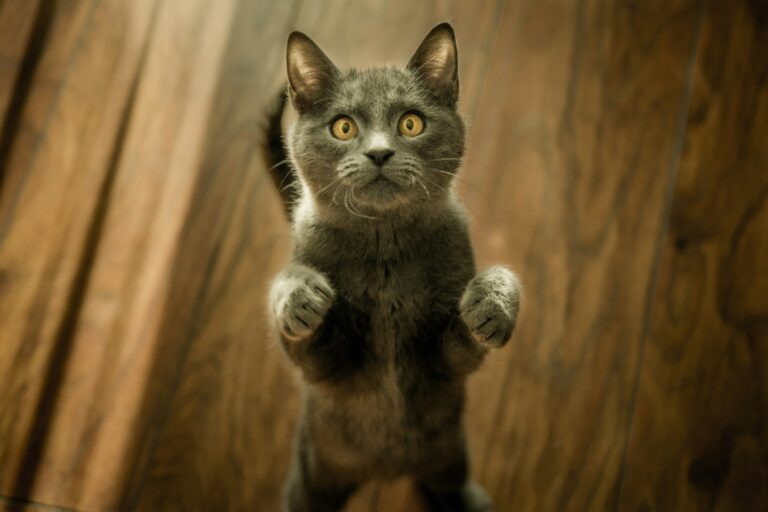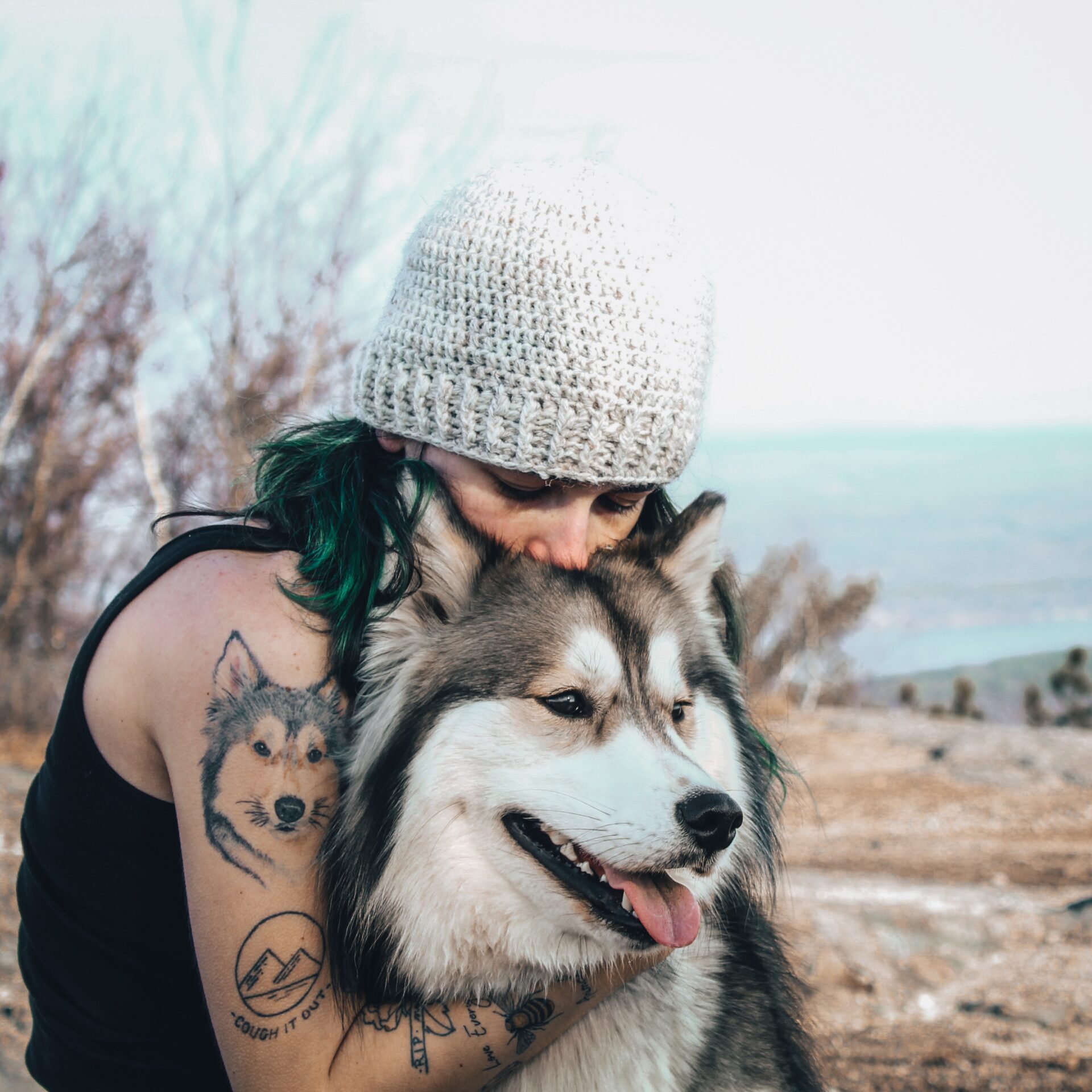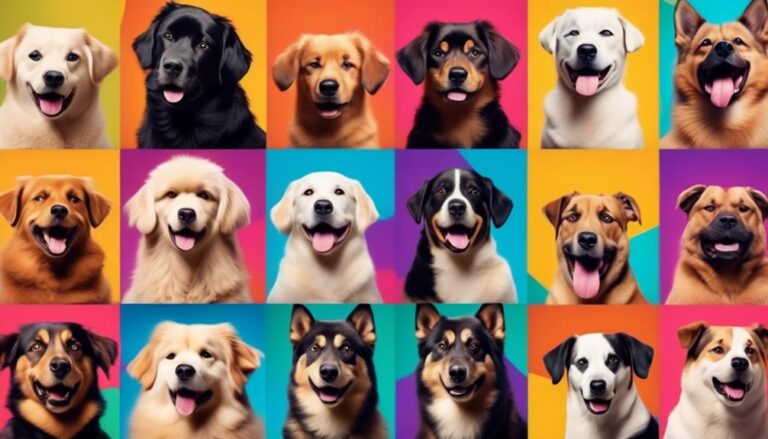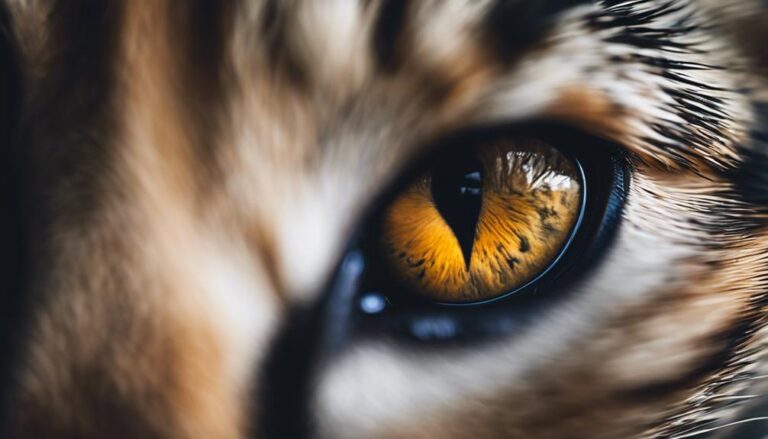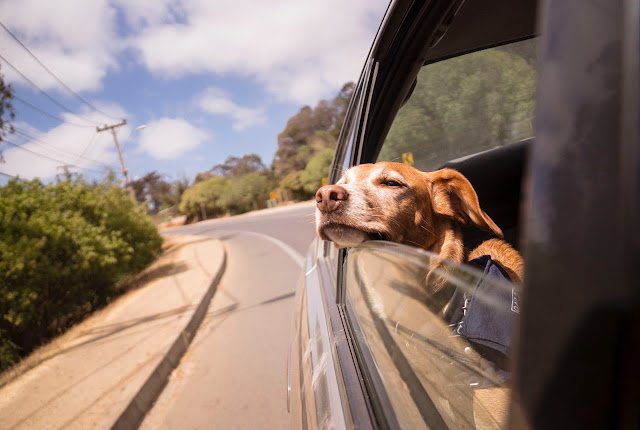To enhance your pet photography skills professionally, consider specialized courses. These courses boost confidence, teach creative techniques, and help capture pet personalities effectively. They provide hands-on training opportunities for real-life scenarios. Expert instructors offer valuable insights and guidance. Additionally, you can learn about specialized techniques, lighting, poses, expressions, branding, and pricing strategies. Consider whether online or in-person courses suit your learning style and goals. Continuing education and networking can further advance your expertise. Immerse yourself in the world of pet photography to unleash your full potential.
Benefits of Pet Photography Courses
Enrolling in pet photography courses can enhance your skills and boost your confidence in capturing the unique essence of animals. One key benefit is learning creative composition techniques that can make your pet photos truly stand out. Understanding how to frame a shot, play with angles, and use lighting effectively will help you create visually stunning images that highlight the beauty of pets in a whole new way.
Moreover, these courses can also teach you how to capture pet personality in your photos. Animals have their own quirks, expressions, and behaviors that make them unique, and knowing how to showcase these traits through photography can result in engaging images that truly resonate with viewers. By learning how to capture the playfulness of a puppy, the curiosity of a kitten, or the loyalty of a dog, you can create photos that not only look great but also tell a story and evoke emotions.
In addition to technical skills, pet photography courses often provide insights on working with animals, understanding their body language, and building a connection with your furry subjects. This knowledge can be invaluable in helping you create a comfortable and safe environment for pets during photoshoots, resulting in more natural and authentic images. Overall, these courses offer a holistic approach to pet photography that goes beyond just taking pictures, allowing you to develop your skills and create meaningful, visually appealing photographs that celebrate the essence of animals.
Choosing the Right Course
When selecting a pet photography course, consider your specific goals and level of experience to ensure you find the right fit for your needs. Course selection plays a vital role in your skill development, so it's important to choose a course that aligns with your objectives.
Begin by evaluating what you hope to achieve from the course. Are you looking to enhance your technical skills, learn about pet behavior, or improve your editing techniques? Understanding your goals will help you narrow down the options and select a course that meets your requirements.
Take into account your level of experience in photography. If you are a beginner, look for courses that provide fundamental knowledge and practical guidance. For intermediate or advanced photographers, seek courses that offer more specialized topics to further enhance your skills.
Research the instructors' backgrounds and teaching styles. A course taught by experienced pet photographers who are passionate about sharing their knowledge can significantly impact your learning experience. Look for reviews or testimonials from past students to get a sense of the course quality and effectiveness in skill development.
Lastly, think about the format of the course. Whether it's in-person workshops, online classes, or self-paced tutorials, choose a learning style that suits your schedule and preferred method of learning. By carefully considering these factors, you can select the right pet photography course to advance your skills and achieve your photography goals.
Essential Equipment for Courses
To get the most out of your pet photography course, having essential equipment is important for honing your skills effectively. Camera lenses are essential in capturing sharp and detailed images of pets, especially when you want to focus on their unique features and expressions. Investing in a variety of lenses, such as a prime lens for portraits or a zoom lens for action shots, can greatly enhance the quality of your photos.
Lighting plays a significant role in pet photography as well. Natural light can create a soft and flattering look, particularly for outdoor shoots, while artificial lighting can help illuminate indoor settings or add creative effects to your images. Experimenting with different lighting setups during your course can expand your skills and versatility as a pet photographer.
In addition to camera lenses and lighting, tripods are necessary for achieving stability and precision in your shots. They can be particularly useful when working with pets that are constantly on the move, allowing you to focus on interacting with the animals while keeping your camera steady. Reflectors are also valuable tools for controlling light and enhancing the overall composition of your pet photos by filling in shadows or creating highlights.
Hands-On Training Opportunities
During pet photography courses, you can enhance your skills through hands-on training opportunities that allow you to practice capturing images of animals in real-life settings. These experiences provide invaluable practical knowledge that can greatly boost your expertise in pet photography.
Outdoor settings offer a dynamic environment for practicing pet photography. In these settings, you can work with natural light, varied landscapes, and unpredictable animal behavior. Capturing pets outdoors allows you to experiment with different compositions and lighting conditions, preparing you to adapt quickly to changing circumstances.
Studio setups provide a controlled environment for honing your technical skills. In a studio, you can focus on mastering lighting techniques, adjusting camera settings, and directing animal poses. Working in a studio setting allows you to perfect your craft without external distractions, enabling you to fine-tune your photography skills with precision.
Expert Instructors and Mentors
Expert instructors and mentors play an essential role in guiding aspiring pet photographers to develop their skills and gain valuable insights into the art of capturing animals on camera. These professionals provide creative inspiration by sharing their experiences and expertise, helping you stay updated on industry trends. By learning from them, you can enhance your photography techniques and create unique compositions that stand out in the competitive pet photography market.
Moreover, expert instructors and mentors assist in portfolio building, guiding you on selecting the best images to showcase your talent. They offer constructive feedback to help you improve your work and attract potential clients. Additionally, they provide valuable advice on establishing and maintaining client relationships, emphasizing the importance of communication, professionalism, and understanding the pet owner's needs.
Through their guidance, you can refine your pet photography skills, develop a distinctive style, and learn how to adapt to different pet personalities. Their mentorship can boost your confidence, expand your creativity, and help you navigate the challenges of the industry with ease. Overall, having expert instructors and mentors by your side can significantly accelerate your growth as a professional pet photographer.
Specialized Techniques and Styles
When capturing stunning pet portraits, understanding how lighting can enhance different fur textures and colors is important. Experimenting with poses and expressions can bring out the unique personality of each pet, creating memorable images. These specialized techniques and styles are essential for creating engaging pet photography that truly stands out.
Lighting for Pet Portraits
Enhance your pet portraits with unique lighting techniques and styles that capture their personality and essence. When using natural lighting, position your pet near a window to create soft, flattering light that highlights their features. For a more controlled approach, consider a studio setup with adjustable lights to illuminate your subject evenly. Experiment with different angles and intensities to add depth and dimension to your pet portraits. Natural lighting can create a warm and inviting atmosphere, while studio setups allow for precise lighting control. By mastering these lighting techniques, you can elevate your pet photography skills and produce stunning portraits that showcase the beauty and character of your furry subjects.
Poses and Expressions
Capture the essence of your pet with unique poses and expressions in your photography. Experiment with different angles to showcase your pet's personality. Get down to their level for a perspective that truly captures their character. Incorporate creative compositions to add interest to your pet portraits. Play with close-up shots to highlight intricate details like their eyes or paws. Encourage natural movements and expressions by letting your pet roam freely during the shoot. Capture candid moments that reflect their true spirit. Remember, the key is to be patient and observant to seize those perfect moments. By focusing on poses and expressions, you can create enchanting pet portraits that truly speak to the soul of your furry friend.
Business and Marketing Insights
Now, let's talk about some essential aspects of running a successful pet photography business. You'll discover effective branding strategies tailored for pet photographers, helping you stand out in a competitive market. Additionally, we'll explore smart pricing strategies designed to maximize your profits while keeping your clients happy.
Branding Strategies for Pet Photographers
Developing a strong brand identity is essential for pet photographers looking to stand out in a competitive market and attract their ideal clients. Utilize social media platforms to showcase your work, engage with potential clients, and build a community around your brand. Consistency in your branding across all channels, from your website to your social media profiles, helps establish credibility and recognition. Foster strong client relationships by providing exceptional customer service, understanding their needs, and delivering high-quality work that exceeds their expectations. Encourage clients to share their positive experiences with your services on social media, which can help increase your visibility and attract more clients. Remember, a compelling brand and positive client relationships are key factors in differentiating yourself in the pet photography industry.
Pricing Strategies for Pet Photography
To effectively price your pet photography services, consider the value you provide to your clients and the market demand for your unique style and expertise. Conduct a competition analysis to understand what other pet photographers are charging for similar services. Pricing strategies should reflect not only your costs but also the quality and creativity you bring to each photoshoot. Building strong client relationships is essential for customer retention; offer loyalty discounts or referral bonuses to encourage repeat business. Remember, pricing is not just about the numbers; it's a reflection of your brand and the perceived value of your work. By setting prices that align with your worth and the market, you can attract and retain loyal customers who appreciate your artistry.
Online Vs. In-Person Courses
When deciding between online and in-person pet photography courses, consider your learning style and availability. Online advantages include flexibility in scheduling, the ability to learn from anywhere, and often cost-effectiveness. With online courses, you can study at your own pace, fitting lessons around your existing commitments. Additionally, online platforms offer a wide range of resources, including video tutorials, webinars, and online communities where you can interact with instructors and peers.
On the other hand, in-person benefits involve hands-on experience, immediate feedback from instructors, and networking opportunities with fellow photographers. In-person courses often provide a structured environment that can enhance your learning process through real-time interactions and practical exercises. Being physically present in a classroom or workshop setting allows for a more immersive learning experience, where you can observe techniques firsthand and receive personalized guidance from instructors.
Consider your preferred learning environment and the level of interaction you desire when choosing between online and in-person pet photography courses. Online courses offer convenience and flexibility, while in-person classes provide a more hands-on and interactive approach. Ultimately, the decision between the two formats depends on your individual preferences, goals, and availability.
Continuing Education and Networking
Considering the significance of ongoing learning and building connections, exploring opportunities for continuing education and networking is vital for pet photographers. Staying updated on industry trends through continuing education helps you refine your skills, stay competitive, and adapt to the evolving demands of the market. By attending workshops, conferences, or specialized courses, you can enhance your knowledge base and techniques, ultimately improving the quality of your pet photography.
Networking events play a pivotal role in expanding your professional circle and fostering collaborations within the pet photography community. These events provide a platform to meet like-minded individuals, share experiences, and potentially gain referrals or partnerships. Engaging with other professionals in the field not only broadens your perspective but also opens up avenues for growth and exposure.
To make the most out of networking events, actively participate in discussions, exchange contact information, and follow up with potential connections. Stay engaged on social media platforms frequented by pet photographers to stay informed about upcoming events and opportunities to connect with others in the industry. By actively pursuing continuing education and networking opportunities, you can stay ahead of the curve and elevate your pet photography business to new heights.
Frequently Asked Questions
Are There Any Opportunities for International Students to Participate in These Pet Photography Courses?
Yes, international students have opportunities to participate in these pet photography courses. You can collaborate with other students, gaining a global perspective on photography. Engage in diverse experiences and learn alongside a vibrant community of aspiring photographers.
How Do Pet Photography Courses Typically Incorporate the Use of Drones or Other Advanced Technology?
When learning about drone techniques in pet photography courses, you'll explore how to capture unique perspectives and dynamic shots. These classes typically integrate advanced technology to enhance your skills, offering a blend of creativity and innovation.
Can Students Expect to Receive Certification Upon Completing a Pet Photography Course?
Upon completing a pet photography course, you can expect to receive a certification. This recognition validates your skills and knowledge in the field. Certification can boost your credibility and open up opportunities for your photography career.
Do Pet Photography Courses Cover Ethical Considerations When Working With Animals?
When working with animals, it's vital to ponder ethical considerations and prioritize animal welfare. Always make certain that your practices are respectful, safe, and compassionate towards the animals you are photographing. Keep their well-being at the forefront.
Are There Any Opportunities for Students to Collaborate With Other Professionals in the Industry During the Course?
Yes, during the course, you will have collaboration opportunities with other professionals in the industry. This will enhance your networking, professional development, and help you build valuable industry connections that can benefit your career.
Conclusion
Overall, pet photography courses offer valuable benefits for professionals looking to enhance their skills and expand their business. By choosing the right course, investing in essential equipment, and taking advantage of hands-on training opportunities with expert instructors, you can develop specialized techniques and styles while gaining insights into business and marketing strategies. Whether you prefer online or in-person courses, continuing education and networking opportunities will help you stay ahead in this competitive industry.




